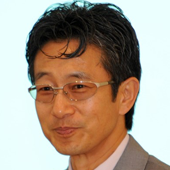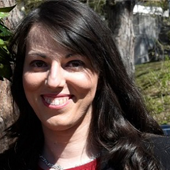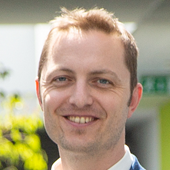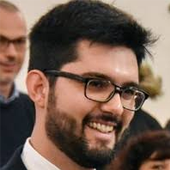Tuesday 1 December 2020
Time slots: 2:00 PM CET | 10:00 PM CET | 6:00 AM+1 CET
Duration: 03:30:00
Automotive & Transportation Session | Part 2
AGENDA
Keynote Speaker: Kyung Hee University | Jin H. Choi
Rapid Digital Transformation in CAE driven by Covid-19
Altair | Ming Zhou
Future of Design, Simulation and Optimization
Comer Industries S.p.A. | Elisabetta Fava
Oil flow rate optimization of an axle with an integrated input planetary stage for an uphill and downhill path
EnginSoft USA | Brant A Ross
High-Fidelity Simulation of Dynamic Axisymmetric Structures with Process Automation
Engineering Center Steyr | Gerhard Spindelberger
Improving the lightweight design of an e-drive system by means of fatigue analysis
DYNAmore Italia srl | Simone Cavariani
High strength and dual phase steel: calibration of the material cards for LS-DYNA using DIC
Industrie Saleri Italo S.p.A. | Remo De Donno
Design of centrifugal pumps by CFD-based optimization techniques
Istituto Italiano di Tecnologia | Francesco Madaro
Flexible Aluminum Nitride-based Energy Harvester by Vortex induced vibration for Powering Remote Gas Sensor in Car's Exhaust: model and experimental validation
Keynote Speaker
Kyung Hee University | Jin H. Choi
Rapid Digital Transformation in CAE driven by Covid-19
The recent CovId-19 pandemic situation has been forcing the entire change of our previous lifestyle. It has affected most of our lives in living, working, and enjoying in different ways. In this presentation, the progresses of rapid digital transformations in CAE are introduced for its community understanding. It has a huge impact, and we cannot go back even if we want to go back to the era of BC. Covid-19, why is it so serious? How long will the impact last? These questions are possibly answered in this presentation to predict how fast or inevitable digital transformations are progressing in society, moreover CAE community. In the CAE community it can be, possibly, opportunities to expand the simulation market, growth of contactless-industries. As Winston Churchill says, “Never let a good crisis go to waste”, it could be a big opportunity for the CAE community.
Curriculum
Jim Hwan Choi is a South Korean university professor at the Kyung Hee University, Faculty of Mechanical Engineering, in Seoul (South Korea). After his graduation in mechanical engineering at the Hanyang University (Seoul, South Korea) he moved to the University of Illinois at Chicago (USA) where he received his M.S. and Ph.D. in Mechanical Engineering in 1992 and 1996, respectively. Since his doctoral work, prof. Choi has been doing research in the field of Multi-Body-Dynamics simulation methods, so that he is today one of the foremost authorities in this specific and related topics.
Over the years, prof. Choi covered many prestigious roles at the Kyung Hee University such as Chair of the Mechanical Engineering Faculty, Vice Dean of the College of Engineering, and Director of the Center for Strategic Planning. He is also founder and chair of FunctionBay, Inc., a Korean-based company that develops and distributes worldwide the RecurDyn Multi-Flexible-Body-Dynamics software.
Prof. Choi owns over 100 journal publications in multiple fields of computational applied mechanics, including Flexible Multibody Dynamics, Tracked Vehicle System Dynamics, Media Transport System Dynamics, Dynamic System and Control, Dynamic System and Fluid Interaction, HPC / GPU for Multi Body Simulation, CAE software development, Digital Twin, and Data Driven CAE using Deep Neural Network.
14:45 Technical session

Altair | Ming Zhou
Future of Design, Simulation and Optimization
Traditionally product design starts with CAD, typically inheriting design concepts largely from previous product generations. Topology optimization inverts the process by driving design concept creation through simulation. This puts CAE in front of CAD in the product development life cycle, transforming the design process from evolution to innovation. Remarkable results have been achieved on many iconic products, including the Boeing 787, Airbus 380, and 350, that everyone of us have touched firsthand. As we reflect up on recent technology advancements, let’s take a longer view into the future and imagine what a engineer’s day may look like in 20, 50 and 100 years.
Curriculum
Dr. Ming Zhou joined Altair in 1998 and has been carrying the role of Chief Optimization Technologist at Altair ever since. Since 2008 he has been VP/SVP responsible for R&D of structural analysis and optimization software. Ming has published over 100 research papers on peer reviewed journals and at conferences, which have received over 4700 citations to date. He was among the original authors of the SIMP method for topology optimization, and his latest contributions include the patented fail-safe topology approach. His roles in the research community include Editor-in-Chief of the journal 'Structural and Multidisciplinary Optimization', VP of ISSMO (international society of structural and multidisciplinary optimization).

Comer Industries S.p.A. | Elisabetta Fava
Oil flow rate optimization of an axle with an integrated input planetary stage for an uphill and downhill path
An axle with an integrated input planetary stage has been simulated with ParticleWorks to predict the oil flow path in the planetary stage when the machine in which it is mounted faces the changes of slope of the ground. For this reason, a speed law that reproduces the slope variations has been imposed: a first step in which the axle is in an horizontal configuration is followed by the second step in which it is sloped to simulate the uphill configuration, then the downhill condition is the third step followed again by the horizontal position.
The first simulation has been run considering the current housing oil passages geometry and the current level of oil and it has shown that almost all the quantity of oil that arrives in the oil passages reaches the two bearings of the spiral pinion shaft and does not arrive to the planetary stage during the sloped conditions. Thus, a second simulation has been run modifying the oil passages geometry, maintaining the previous oil level: in this case there is a significant increase of oil quantity that reaches the planetary stage and also during the sloped configurations meaning that the optimizations are working properly. In the third and last simulation the oil level has been increased: this simulation has shown that there is a further increase of oil exchange between the oil passages and the planetary stage but the oil quantity that remains in the planetary stage doesn’t change significantly.
With those three simulations it has been possible to improve the lubrication of the planetary stage optimizing only the housing oil passages geometry without increasing the oil level that would have meant increase of temperature and loss of efficiency.
Curriculum
Elisabetta Fava is graduated in Mechanical Engineering and is a design engineer of the Advanced Technology Team in the Research and Development Department of Comer Industries S.p.A. She is focused on the development of advanced virtual validation tools in terms of tuning and methodologies.
EnginSoft USA | Brant A Ross
High-Fidelity Simulation of Dynamic Axisymmetric Structures with Process Automation
Drivetrain components are required to withstand large numbers of cycles and various dynamic loading events. Accurate analysis of driveline components can be achieved by considering the dynamics in the system as well as the component structural characteristics. An example is the simulation of the flexible boot of a constant velocity (CV) joint assembly that is used in an off-highway application with extreme transmission angles. The use of multibody dynamics and nonlinear finite element analysis techniques are used to simulate the boot behavior. The simulation technique includes a replication of the assembly process as well as the dynamic operation. Validation of this simulation consists of excellent correlation between simulation and test for the collapse of two outer folds of the boot (forming dimples), the shape of the boot, and the contact between folds, all when rotating with a large transmission angle. Process automation was used to increase the efficiency of such simulations.
Curriculum
Ph.D. degree in Mechanical Engineering from Brigham Young University
7.5 years as an engineer at John Deere and General Motors
9 years with Mechanical Dynamics (ADAMS multibody dynamics software)
3 years with FunctionBay
16 years with MotionPort (founder, owner, president)
Current position / tasks
6 months with EnginSoft USA, who acquired MotionPort in May. We provide RecurDyn multibody dynamics software, Particleworks CFD software and related services to organizations across the USA.

Engineering Center Steyr | Gerhard Spindelberger
Improving the lightweight design of an e-drive system by means of fatigue analysis
Innovative lightweight design is the key to reducing consumption and pollutant emissions. Especially the paradigm shift currently underway towards more electrification demands new possibilities for saving weight to be explored. Thus the aim of this presentation is to show how a fatigue life analysis can be carried out for a modern electric drive system. The e-drive system will be subjected to an engine run-up simulation with excitation data coming from gear simulation. Since vibration phenomena play an essential role here, a modal fatigue analysis is carried out. The workflow consists of three steps. First an eigenfrequency and modal response analysis are carried out to characterize the dynamic behavior of the structure. Next the FEMFAT add-on tool HARMONIC is used for the data preparation of the modal participation factors for fatigue analysis. The subsequent modal fatigue analysis in FEMFAT is based on the principle of linear superposition of modal stresses and modal participation factors. In this way endurance safety factors are computed.
Curriculum
Education / Studies
Study of Applied Mathematics in Linz
Professional career (all at ECS, Magna Powertrain)
2007 - 2011: Simulation engineer
2011 - 2014: Support Engineer for FEMFAT Software
2014 - 2016: Method development for the derivation of simplified test loads
2016 - now: Support Engineer for FEMFAT Software
DYNAmore Italia srl | Simone Cavariani
High strength and dual phase steel: calibration of the material cards for LS-DYNA using DIC
In the recent years, the usage of HS-steels has risen significantly in the automotive field. Their characteristics, such as hardness and favorable weight to strength ratio, can increase safety, fuel efficiency and overall product profitability. On the other hand, the dual phase steels, which being more ductile can be used in many more parts of the body in white. They offer a wide range of characteristics in terms of ultimate strength and elongation, according to the volume fraction of the martensitic and ferritic phases.
In this context, for the design with these materials it has become crucial to be able to characterize them precisely and accurately predict their failure in many complex conditions, to fully exploit their capabilities and describe accurately the vehicle response in a crash scenario. LS-DYNA, for these kinds of simulations, is one of the most accredited simulation software. The authors aim to provide the crash analysts a verified workflow to prepare material cards for LS-DYNA.
In this work, the experimental evaluation of the materials was carried out using the digital image correlation (DIC). With such technology, the displacement fields of the test specimens is recorded. The evaluated field was processed as a family of stress-strain curves (hyper-curves) and became the objective of the optimization. This approach is named full field approach and was performed using the optimization software LS-OPT that since version 6.0 presents the capability to analize hyper-curves.
To evaluate the effectiveness of the full field approach a parallel study was implemented. The same routine of optimization run with a single stress-strain curve, which was measured with an extensometer. The comparison between the results obtained with the traditional approach and the results obtained with the full field approach highlighted the strenghts and the limitations of the two methods.

Industrie Saleri Italo S.p.A. | Remo De Donno
Design of centrifugal pumps by CFD-based optimization techniques
This study investigates the capability of a surrogate-based optimization technique for the design of centrigufal pumps for the automotive field.
A fully three-dimensional geometry parametrization based on Bézier surfaces for the impeller, vaneless diffuser and the volute is presented.
The link between pump geometry and pump performance is given by CFD simulations performed with ANSYS CFX, while the optimization strategy is managed by the Dakota software.
The results of this work show an effective methodology for the new design of centrifugal pumps at the best efficiency point.
Curriculum
Job position
CAE Department Coordinator
Education
PhD degree (2018) in Energy, Fluid & Thermal, and Manufacturing Systems and Technologies at the University of Brescia
Publications
De Donno, R.; Ghidoni, A.; Noventa, G.; Rebay, S. (2019): Shape optimization of the ERCOFTAC centrifugal pump impeller using open-source software. Optimization and Engineering
De Donno, R.; Rebay, S.; Ghidoni, A. ( 2019): Surrogate-based shape optimization of the ERCOFTAC centrifugal pump impeller. Computational Methods in Applied Sciences
Schoenfelder, S.; Breitenstein, O.; Rissland, S.; De Donno, R. & Bagdahn, J. (2013): Kerfless Wafering for Silicon Wafers by Using a Reusable Metal Layer. Energy Procedia, 38, 942 - 949.
Conferences
De Donno, R.; Fracassi, A.; Noventa, G.; Ghidoni, A. and Rebay, S. (2019): Surrogate-Based Shape Optimization of Centrifugal Pumps for Automotive Engine Cooling Systems. Eurogen 2019 Conference Proceedings
De Donno, R.; Fracassi, A.; Ghidoni, A. and Congedo, P.M. (2019): Surrogate based shape optimization under uncertainty of the ERCOFTAC pump. Eurogen 2019 Conference Proceedings
Schoenfelder, S.; Breitenstein, O.; Rissland, S.; De Donno, R. & Bagdahn, J. (2013): Kerfless Wafering for Silicon Wafers by Using a Reusable Metal Layer. 3rd International Conference on Crystalline Silicon Photovoltaics
Schoenfelder, S.; Breitenstein, O.; Rissland, S.; De Donno, R. & Bagdahn, J. (2012): Glue-Cleave: Kerfless Wafering for Silicon Wafers with Metal on Glueing and Removable Interface. 22ndWorkshop on Crystalline Silicon Solar Cells & Modules: Materials and Processes
Oswald, M.; De Donno, R. & Schoenfelder, S. (2011): Modeling of multicrystalline silicon wafers considering microstructural properties. 5th International Workshop on Crystalline Silicon Solar Cells.

Istituto Italiano di Tecnologia | Francesco Madaro
Flexible Aluminum Nitride-based Energy Harvester by Vortex induced vibration for Powering Remote Gas Sensor in Car's Exhaust: model and experimental validation
Flexible piezoelectric materials offer an efficient route to harvest energy from the fluid environments to power remote sensor and electronics. Specifically, the aim of the present work is to describe electrical power generation by energy harvesting from vortex induced vibrations from the fluid flow of the exhaust gas of a Diesel car by a flexible Aluminum Nitride-based device. The harvested electrical energy will power a remote gas sensor and a transmitter in order to build an Internet of Things (IoT) node. To optimize the design of the piezoelectric harvester, a computer fluid dynamics (CDF) and a piezoelectric structure interaction (PSI) model of the fluid flow environment and of the harvester was constructed using ANSYS. The simulations of electrical power generated were compared with the experimental measurements carried on the real harvester, fabricated using the same geometrical and physical parameters used in the computer aided model. Although some discrepancies between the two scenarios, real measurements and simulations, were observed, the present work shows a milestone towards building a solid ANSYS model of the energy harvester and use it to optimize the design.
Curriculum
I majored in Materials Engineering at University del Salento, Lecce, Italy, specialization Ceramic Materials for Solid oxide Fuel Cells, and I have completed a PhD at NTNU in Trondheim, Norway on Piezoelectric Ceramic Materials.
I have been a Teacher a College Professor in Texas and California, and since 2018 I have come back to Italy to join Istituto Italiano di Tecnologia as Post-Doc Researcher on Piezoelectic materials and devices.